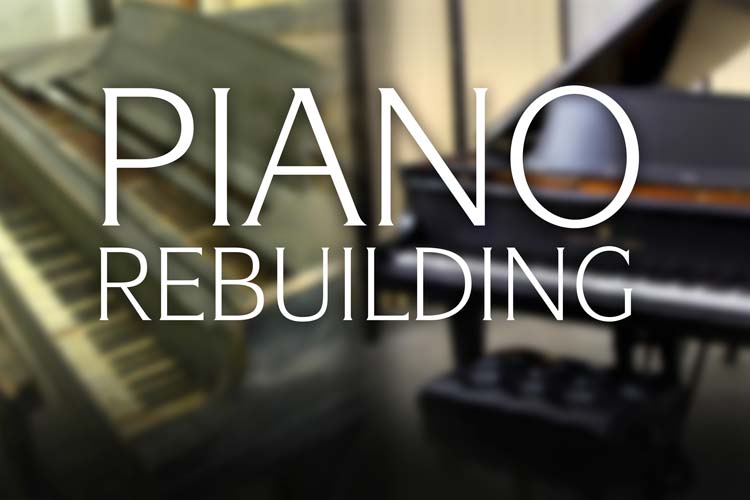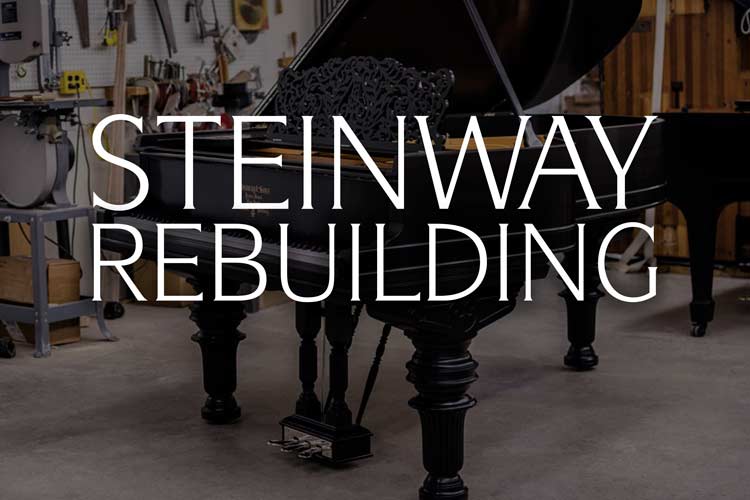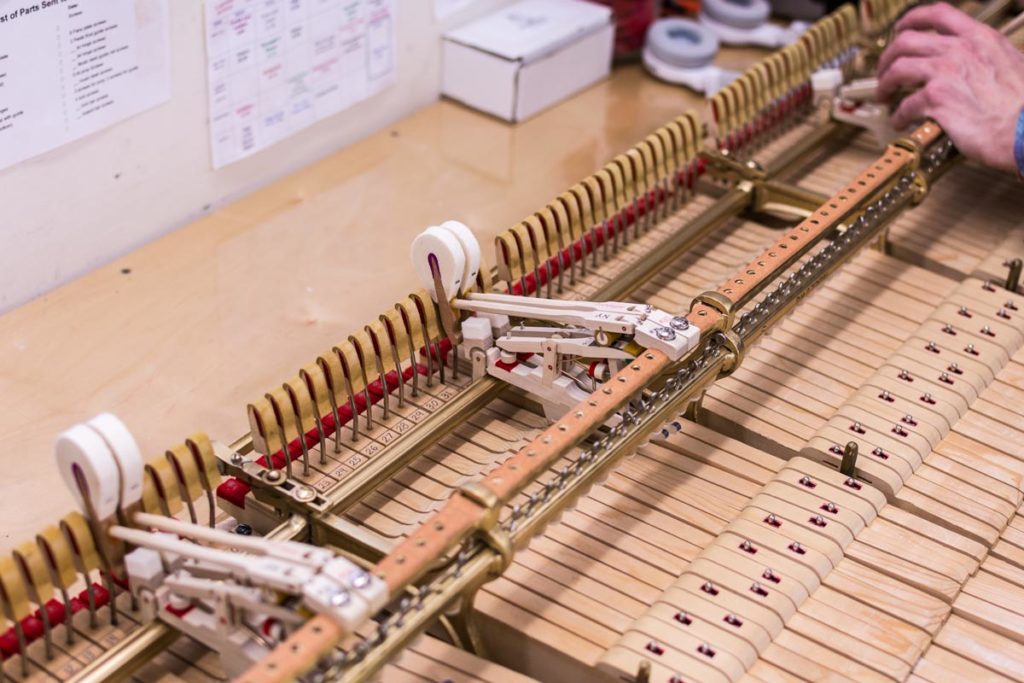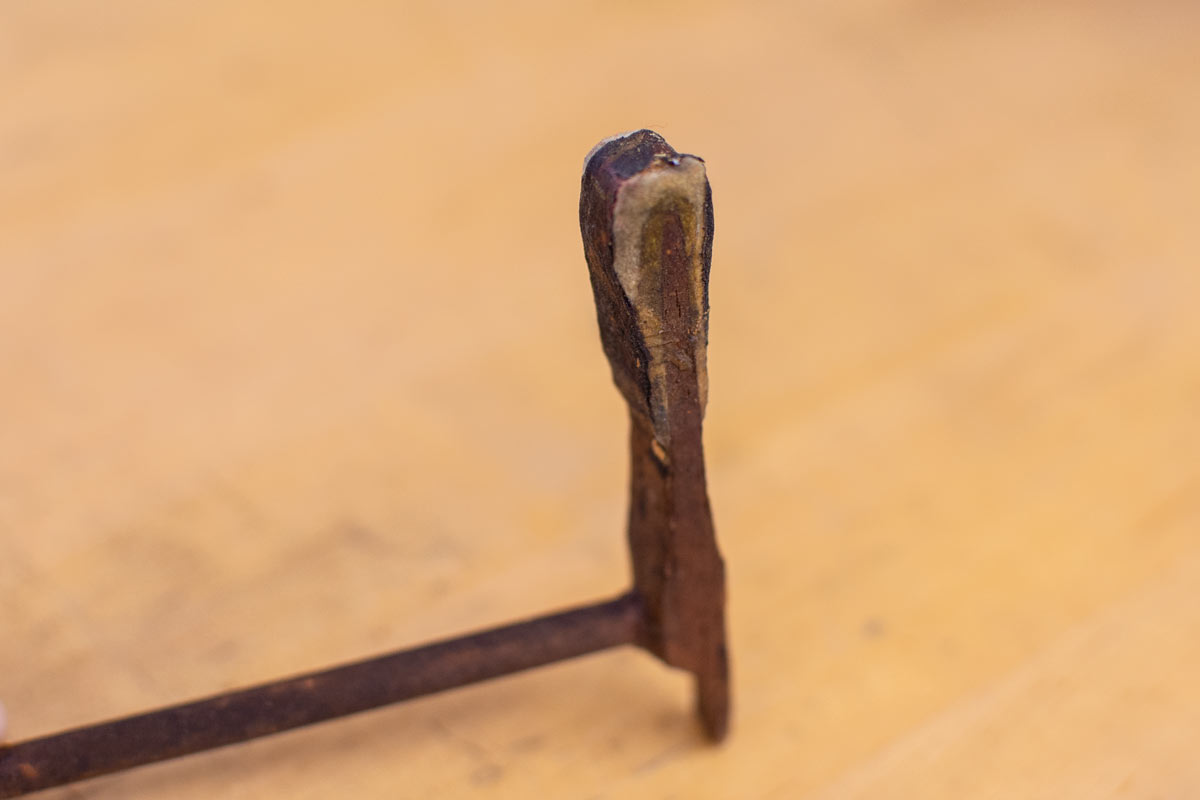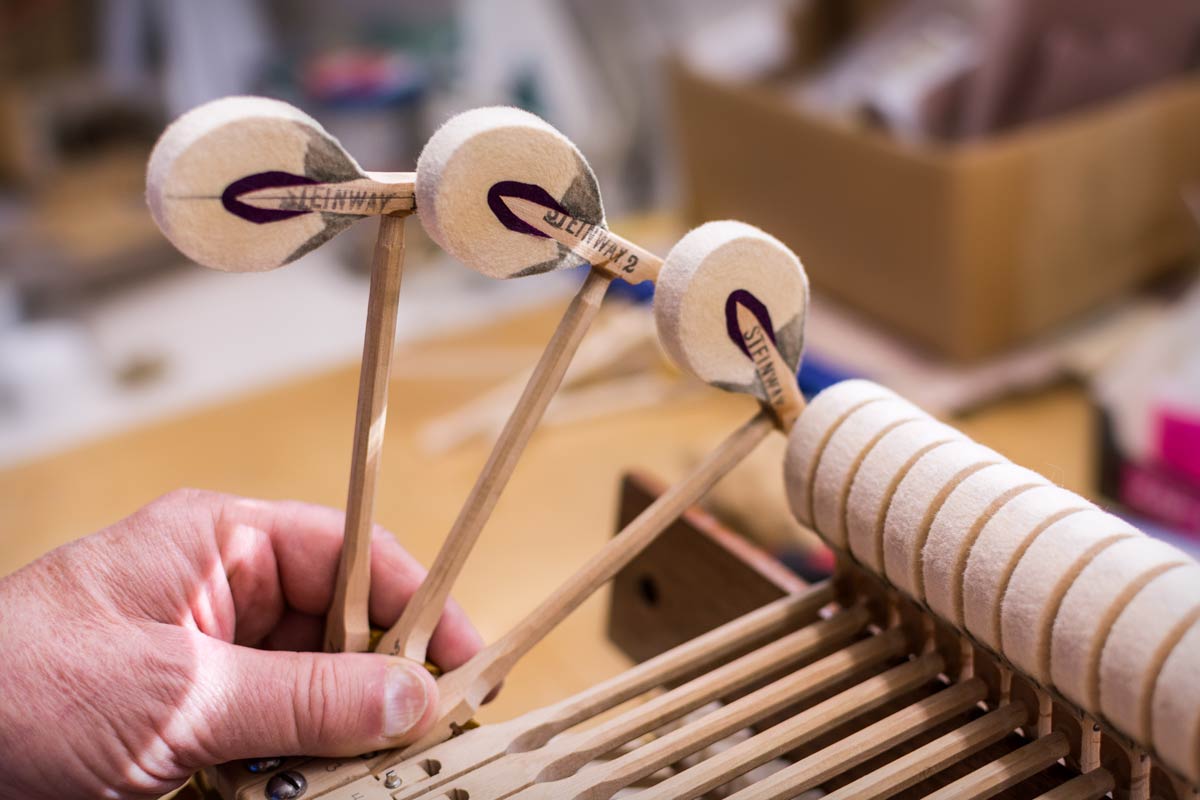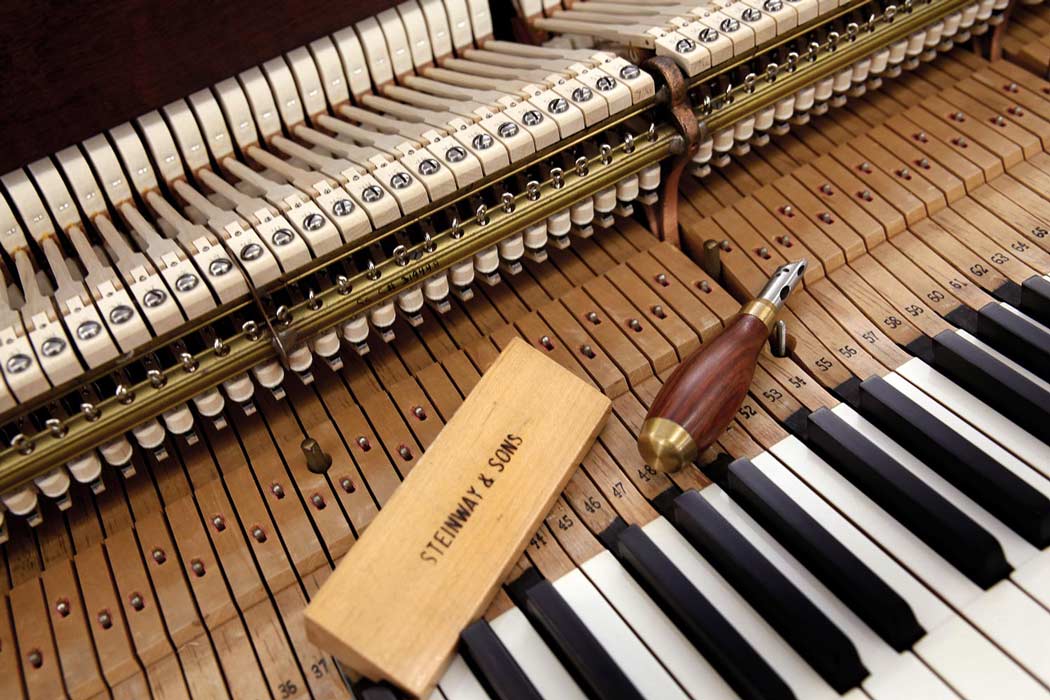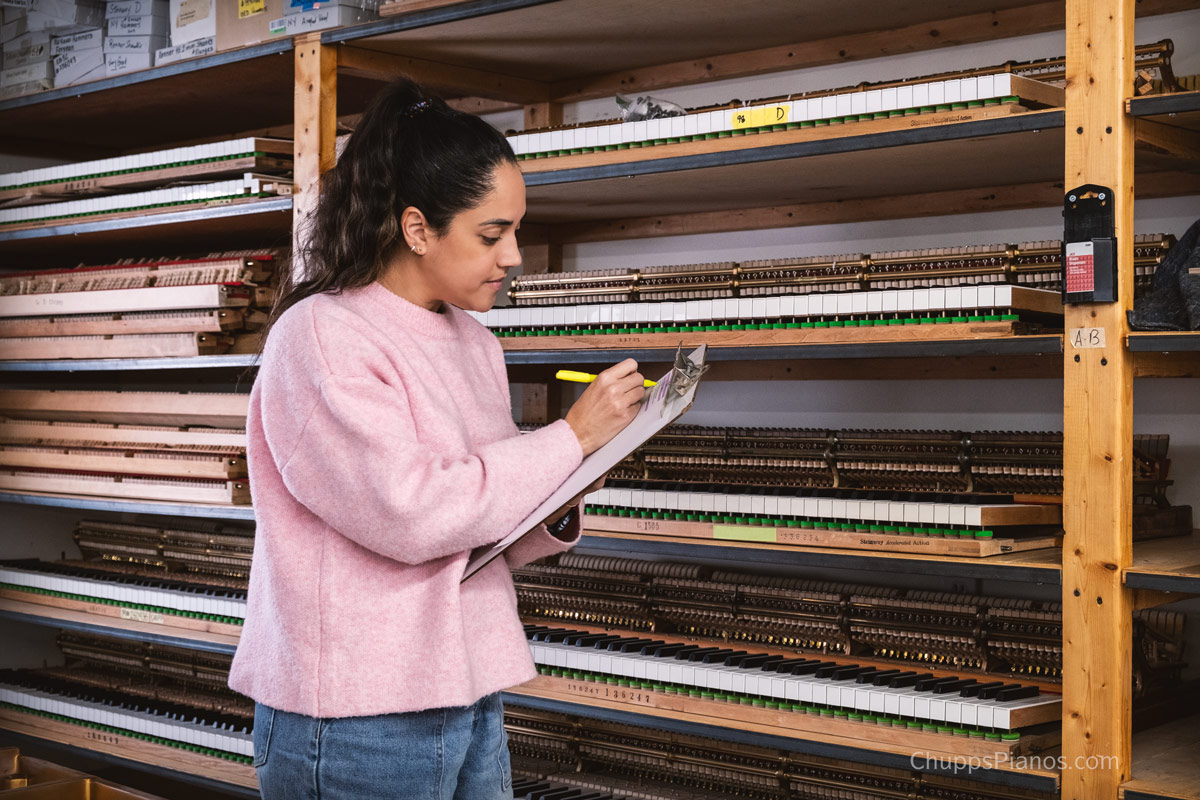Proper Action Restoration & Regulation
Almost all of the moving parts that make up a grand or upright piano can be found within the piano’s action. When a key is pressed, dozens of individual components work in unison to allow the hammer to hit the string in a precise spot, at the right angle and with the exact amount of required force. It is essential that the action is not only rebuilt with high-quality parts of the correct dimensions, it must be regulated and voiced to bring out the best that the instrument can offer. There are over forty steps that go into the regulation of a grand piano action. This must be repeated for each individual note on the piano and great care must be taken to ensure consistency over the entire keyboard. Our piano technicians have the vital education and experience needed to bring your rebuilt piano to concert-level perfection. Here is just a sample of what we do when we fully re-build a piano action.
Choosing the Action Parts
Selecting the correct parts is the first step in restoring a grand piano action. We conduct an action analysis on each piano in order to find the parts which fit the specific piano’s action geometry, resulting in the ideal touch-weight. Action ratio, key ratio, and much of the overall action geometry can be improved upon during the piano rebuilding process. We utilize the highest quality components available in all of our piano rebuilding work. This includes genuine Steinway & Sons, German Renner, and Tokiwa action parts, and more. We do not limit ourselves or our clients to a ‘cookie-cutter’ brand loyalty. Like a fine tailor, we carefully select the components that fit the best for a truly bespoke end product.
When it comes to Steinway & Sons instruments, hammers that are pressed in the style of the ones originally used in historic, golden-era Steinway pianos are crucial in achieving the coveted Steinway tone. New let-off buttons and regulation screws are also secured and installed. We can and will select the parts utilized in the action to fit your specific playing preferences, to ensure the responsiveness and the tone you desire.
The Action Stack & Full Disassembly
Action parts are installed on the action stack or frame. The frame’s job is to hold the action components tightly and securely. When re-building a piano action we remove this important component, uninstall all of the parts, clean it, conduct any needed repairs, and re-bronze it to return it to a factory-new look. The new parts that were chosen during the action analysis are then installed.
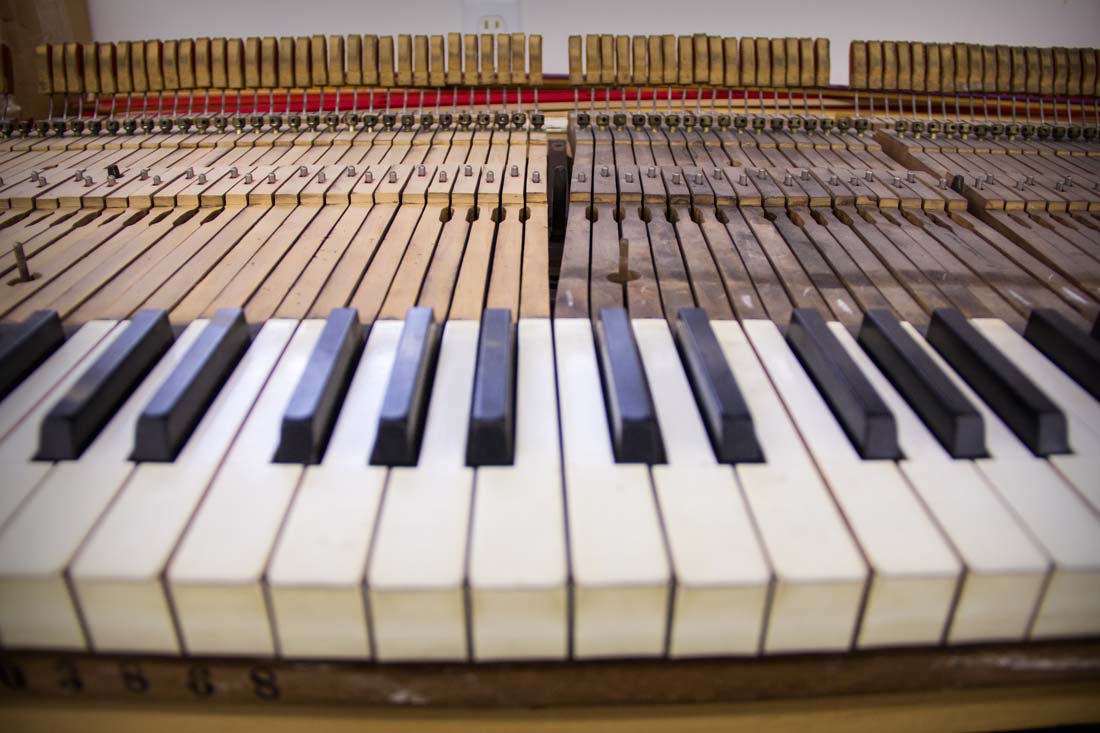
This shot shows vintage Steinway piano key sticks undergoing restoration. On the left are key sticks that have been fully cleaned. On the right are the key sticks in their un-restored state.
The Piano Keys
There are 88 keys on a standard grand piano.
If the keys feature original ivory, our expert ivory keytop restorers go to work. The vintage ivory keytops are sanded, cleaned and polished to create a smooth surface and return them to a brilliant, like-new look. Often the original keytops have loosened from years of playing and are glued securely back into place. If new keytops are required or requested we use only the highest quality acrylic materials. Old key sticks usually come into our shop in a very dirty state. We clean and sand each individual key stick to ensure a smooth feel and a clean action. If the key sticks ‘wiggle’ this creates an unstable feeling keyboard that does not instill confidence in the player. Key bushings are checked to make sure they are tight enough to hold the key firmly, yet loose enough so they do not bind against the key pins.
The key end felt is evaluated and about 90% of the time full replacement is required. The key end felt pushes against the damper underlever and raises them when a note is played. Over time this can become moth-eaten and matted down, resulting in dampers that fail to lift fully. The keybed felt on which the back ends of the keys sticks rest goes through the same process and evaluation.
Leveling the Keys
 Many vintage pianos have keys that are no longer level. An uneven keyboard can be a constant frustration for a pianist of any skill level. To level the keys we remove the key sticks and precisely level the entire keyboard. This is done by using paper punchings of various thicknesses that adjust the key to the proper height. A punching made of felt is then placed over the paper to help absorb the impact of the keystroke. The keys are then checked to ensure they are at the correct height in relation to the piano’s fallboard. Working from the outside in, each key is positioned to create the correct level of key dip. After the keys are leveled, the keys are played thousands of times to tamp down the felt and paper punchings. Final adjustments are then made. This seemingly simple process requires precision and careful measurements to allow for an even keyboard and the right level of key drop.
Many vintage pianos have keys that are no longer level. An uneven keyboard can be a constant frustration for a pianist of any skill level. To level the keys we remove the key sticks and precisely level the entire keyboard. This is done by using paper punchings of various thicknesses that adjust the key to the proper height. A punching made of felt is then placed over the paper to help absorb the impact of the keystroke. The keys are then checked to ensure they are at the correct height in relation to the piano’s fallboard. Working from the outside in, each key is positioned to create the correct level of key dip. After the keys are leveled, the keys are played thousands of times to tamp down the felt and paper punchings. Final adjustments are then made. This seemingly simple process requires precision and careful measurements to allow for an even keyboard and the right level of key drop.
The Art of Tone Regulation
Creating the Desired Sound
Historic piano hammers were first constructed out of paper and small pieces of leather. This early design lacked power and durability. Modern piano hammers are pressed out of dense, high-quality felt. Sets of hammerheads do not come ‘plug and play’. For example, when brand new Steinway hammers are ordered from the Steinway Parts Department they are most often very soft and misshapen. Due to the softness of new Steinway hammers, they produce an overly mellow tone with insufficient projection and sustain. To achieve the correct dimensions for maximum power and tone they are filed, shaved, and carefully re-shaped. This is a process that to varying degrees must be carried out on all factory-new hammers prior to use.
To achieve the desired tone, specialty felt hardening substances are carefully applied. This adds power and brilliance to the resulting tone. After the hammer hardening process, our technicians even out or mellow the tone by carefully voicing and needling the hammers. This process is an extensive one that truly brings out the very best an individual instrument can be. When completing a piano for a client, we can craft the tone of a piano to be as bright or mellow as the pianist desires.
Chupp’s Piano Service technicians understand proper substance mixture and application, proper voicing and needling techniques, and the myriad of other adjustments necessary to bring a piano up to its full potential. These skills were learned at the Steinway factory and from continued training with legendary Steinway Factory and industry-leading technicians.
The tone regulation process is one of the most essential parts of any service work done on your piano. Bringing out the tone that the pianist desires is only possible with proper voicing techniques. We have the experience and expert training to do just that. Tone regulation is a true art, that when executed properly, brings out the very best a piano can be. This process is where a piano is elevated from not just a mechanical marvel, but to a beautiful musical instrument.
Weigh-Off – The Art of Touch Weight
The keys are then weighed off to exacting specifications. Once the action stack is rebuilt with new parts and initial regulation is completed, the weigh-off technician begins taking their measurements. Highly accurate brass gram weights are used to measure both the down-weight (the amount of weight needed to depress the piano key) and the up-weight (the maximum amount of weight the key can lift during its return to its resting point). Traditionally on a Steinway & Sons Grand Piano, the down-weight is around 50-52 grams and the up-weight comes in at around 28-30 grams in the center of the piano. Each and every key is reweighed during this process to ensure an incredibly responsive action that allows a pianist to fly across the keyboard. This step is one that is often ignored but is, in fact, one of the most vital components of a full action restoration. [Watch a short video demonstrating this process, here.]
Adjustments and Action Regulation
After the entire action has been assembled and checked, final adjustments and regulations are made. The regulation process is truly where the voice and feel of the piano blooms. The hammers are aligned to the strings to make sure they strike the string at the precise point needed. The capstans are adjusted, the wippens are aligned to the knuckles, the let-off is set on the end hammers, the let off and drop is finalized, the spring tension is adjusted and much more. This entire process ensures the correct touch and maximum responsiveness.
Proper action regulation is truly an art and is one of the final and most important steps of the piano restoration and rebuilding process. This job is one that takes time, talent and a dedication to the craft. Our technicians are highly trained by the best in the industry and have the experience needed to craft an action that fits your performance needs. This is just some of the work that we do on every single restored piano we work on here at Chupp’s Piano Service. Our processes are time-tested and proven to produce a piano that plays at its optimum potential.



